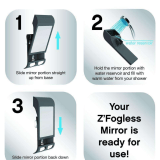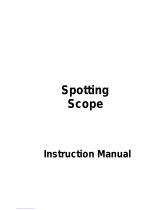
2
T
T
A
A
B
B
L
L
E
E
O
O
F
F
C
C
O
O
N
N
T
T
E
E
N
N
T
T
S
S
INTRODUCTION ............................................................................................................................................................ 4
Warning .......................................................................................................................................................................... 4
ASSEMBLY ...................................................................................................................................................................... 7
Assembling the Telescope .............................................................................................................................................. 7
Attaching the Hand Control Holder ............................................................................................................................ 8
Attaching the Motorized Base to the Tripod ............................................................................................................... 8
Leveling the Telescope ............................................................................................................................................... 8
Attaching the Telescope to the Base ........................................................................................................................... 8
The Star Diagonal ....................................................................................................................................................... 9
The Eyepiece............................................................................................................................................................... 9
Focusing.................................................................................................................................................................... 10
The StarPointer Finderscope..................................................................................................................................... 10
Aligning the StarPointer............................................................................................................................................ 10
Attaching the Hand Control ...................................................................................................................................... 11
Powering the Telescope ............................................................................................................................................ 11
HAND CONTROL ......................................................................................................................................................... 12
The Hand Control ..................................................................................................................................................... 12
Hand Control Operation................................................................................................................................................ 13
Alignment Procedure ................................................................................................................................................ 14
Sky Align.................................................................................................................................................................. 14
Auto Two-Star Align ................................................................................................................................................ 16
Two Star Alignment.................................................................................................................................................. 16
One-Star Align.......................................................................................................................................................... 17
Solar System Align ................................................................................................................................................... 17
Re-Alignment............................................................................................................................................................ 18
Object Catalog .............................................................................................................................................................. 18
Selecting an Object ................................................................................................................................................... 18
Slewing to an Object................................................................................................................................................. 19
Finding Planets ......................................................................................................................................................... 19
Tour Mode ................................................................................................................................................................ 19
Constellation Tour .................................................................................................................................................... 19
Direction Buttons.......................................................................................................................................................... 20
Rate Button ............................................................................................................................................................... 20
Set Up Procedures......................................................................................................................................................... 20
Tracking Mode.......................................................................................................................................................... 20
Tracking Rate............................................................................................................................................................ 21
View Time-Site......................................................................................................................................................... 21
User Defined Objects................................................................................................................................................ 21
Get R.A./DEC........................................................................................................................................................... 21
Goto R.A./DEC......................................................................................................................................................... 21
Identify...................................................................................................................................................................... 22
Scope Setup Features .................................................................................................................................................... 22
Anti-backlash............................................................................................................................................................ 22
Slew Limits............................................................................................................................................................... 22
Filter Limits .............................................................................................................................................................. 22
Direction Buttons...................................................................................................................................................... 23
Goto Approach.......................................................................................................................................................... 23
Cordwrap .................................................................................................................................................................. 23
Utility Features ............................................................................................................................................................. 23
GPS On/Off............................................................................................................................................................... 23
Light Control............................................................................................................................................................. 23
Factory Setting.......................................................................................................................................................... 23
Version...................................................................................................................................................................... 23
Get Axis Position ...................................................................................................................................................... 23
Goto Axis Position.................................................................................................................................................... 23
Hibernate................................................................................................................................................................... 23
Sun Menu.................................................................................................................................................................. 24
Scrolling Menu ......................................................................................................................................................... 24
Calibrate Goto........................................................................................................................................................... 24
Set Mount Position.................................................................................................................................................... 24






















